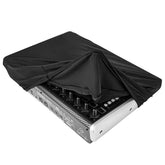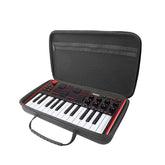The Significance of Slow Practice in Piano Training
Slow practice involves practicing at a speed lower than the required tempo, serving as the preferred and fundamental method for tackling technical challenges in fast, rhythmically complex, or polyphonic piano pieces. This method is considered one of the most basic and scientific practice approaches.

1. Slow Practice for Scales
Playing scales is a complex action, and effective slow practice is only possible when analyzing each individual action of playing scales separately. Given the importance of scale practice throughout the piano learning process, starting with slow practice allows for checking the accuracy of each note in terms of duration, dynamics, and strength until perfection is achieved in all aspects. It's crucial to remember the tonal requirements and dynamic variations while practicing slowly to avoid mechanical and monotonous exercises.
2. Slow Practice for Arpeggios
Piano music is harmonic, and harmony is based on the continuous progression of chords. Arpeggios, being a form of chords, play a vital role in piano music. Mastering arpeggios is essential for enhancing hand and finger function while refining control through brain coordination. Once a reasonable playing method is mastered, the quantity of practice becomes the determining factor. Practicing arpeggios helps in achieving a uniform play, focusing on both intensity and speed, thereby improving fundamental skills.
3. Slow Practice for Etudes and Musical Pieces
In the case of etudes and challenging technical exercises within musical pieces, slow practice is even more crucial. Even for well-practiced pieces, subconscious habitual movements may become unclear and inaccurate without conscious reinforcement and consolidation in slow practice. Slow practice acts like a magnifying glass, making everything unclear in the sheet music or during play distinctly audible.

Etudes Slow Practice:Ensures each note of the etude is played clearly and firmly, with each finger possessing a specific "finger strength" to exert an appropriate weight on the keys.
Musical Pieces Slow Practice:Primarily involves familiarizing oneself with the piece, understanding the music and its structure. For longer compositions, segmental practice is recommended. Careful study and appreciation of each segment, including melody, phrases, sound changes, voice contrasts, harmonic effects, transitional phrases, and musical effect contrasts, are essential during slow practice.

In conclusion, slow practice is an integral method throughout the piano practice journey, ensuring a continuous improvement in the quality of practice. Understanding the purpose and significance of slow practice and applying it reasonably in piano learning leads to effective and scientifically sound learning practices, ultimately resulting in a high-quality learning experience.






